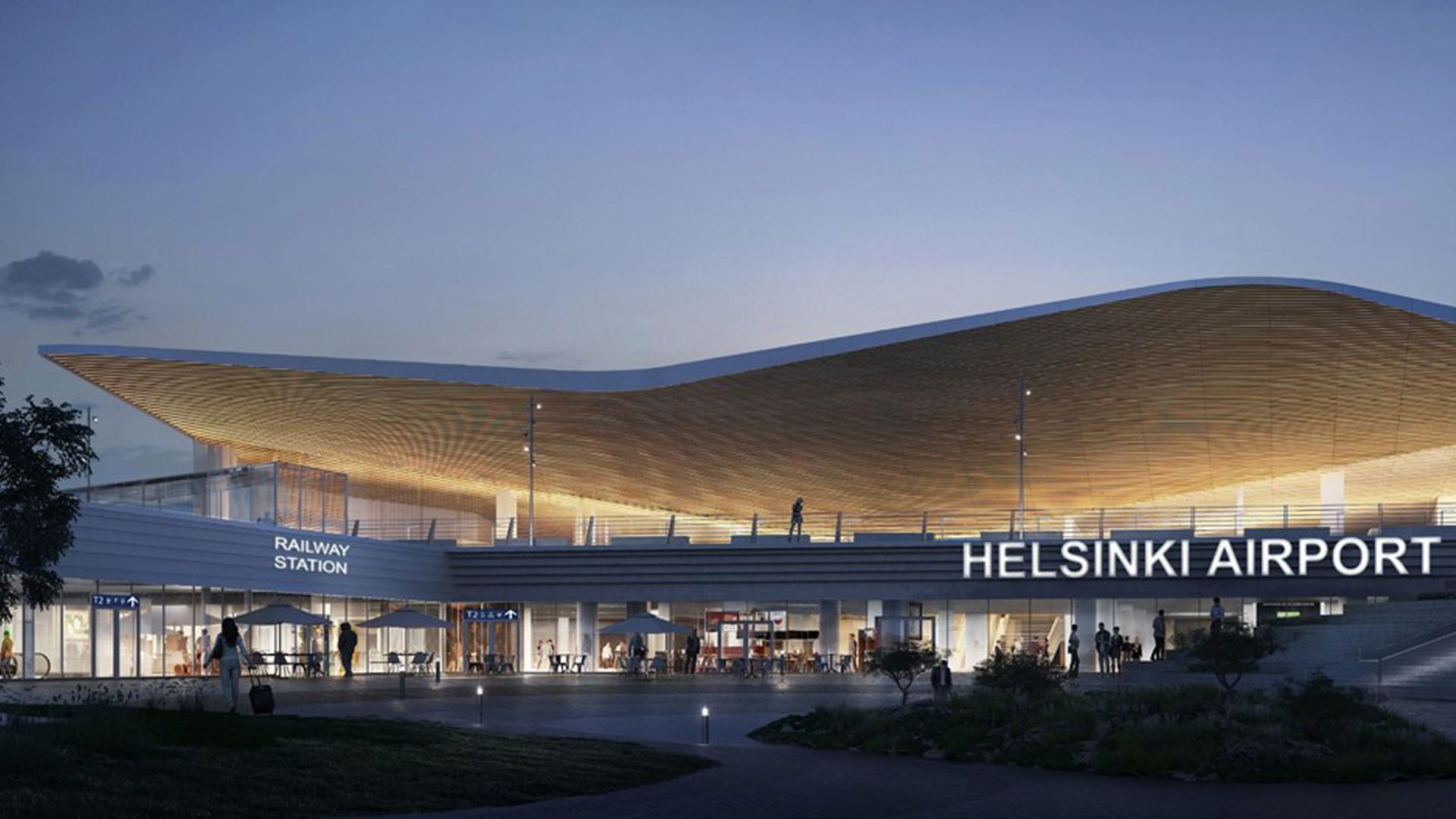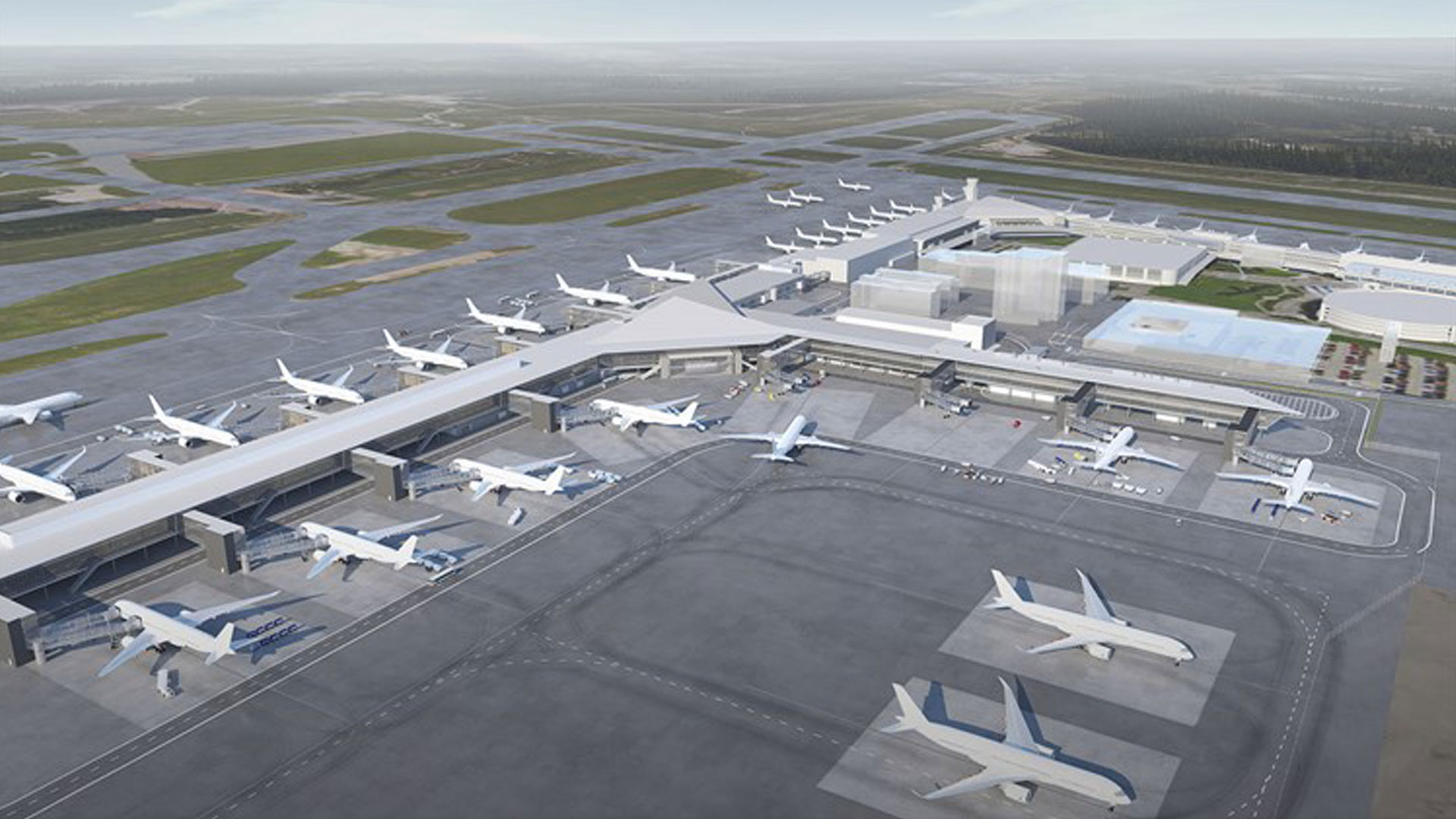Enabling the most extensive expansion in the history of Helsinki-Vantaa Airport

Project results
Terminal development to support 30 million passengers annually
Phasing and CAPEX projections for a 1-billion-euro investment
Facility sizing to increase the terminal square footage by 45% (103,000 m²)
It starts with a plan
Our relationship with Helsinki began in 2014, as FINAVIA sought our expertise to provide the foundation of their development programme – a new airport master plan.There were two key challenges in the master planning stage – the first being the need for a strategy that would allow the phased expansion of the airport’s terminal building. Alongside this, aircraft parking positions needed to be aligned in such a way that hub operations could be optimised for maximum efficiency – at a minimal cost.
Together with FINAVIA, we first identified key requirements of the future terminal and apron developments with the help of air traffic forecasting and simulations. From this, we explored several development area options for the terminal – creating a phased development plan that allowed for flexible growth. At the centre of our plan was the drive to create a ‘one roof terminal’ to further advance? an optimised and efficient airport.
Future-proofing the airport with a new air cargo terminal
The impacts of COVID-19 have sharpened the focus of airports on future-proofing their non-passenger-related revenues – like air cargo – allowing them to weather future financial storms. In foresight, we have taken these ideas into consideration within the 2014 masterplan by delving into the interaction between passenger and air cargo traffic.This led to identifying a location for a new cargo terminal, close to the passenger aircraft aprons. At NACO we enable airports to maximise both their core and non-core revenue streams. This integrated approach to airport planning and design is rooted in every project we undertake – and is informed by our 70 years’ experience in the aviation sector.
Our interdisciplinary work culminated in an Airport Master Plan ready for the airport’s growth until 2035.

One step further
In 2018, the successful collaboration coupled with a great masterplan has brought FINAVIA back to NACO for an update to their 2014 master plan – intending to accommodate balanced development of all facilities, this time until 2040.We commenced with updating our annual and peak forecasts based on the historic traffic developments that had occurred since our initial master plan. The capacities of each of the airport’s infrastructure elements were reviewed and analysed based on current and future demand to propose a phasing strategy for continued development.
This culminated in a comprehensive assessment of the capital investment costs required – giving the airport the fullest picture of what was needed to realise their current and future vision.
Digitally enabled stakeholder engagement
A crucial part of re-evaluating the airport’s long-term strategy was understanding the future developments plans of both the airport and its base carriers (those airlines whose ‘home’ is at the airport). This meant that engaging with stakeholders and bringing them on board was vital to the success of this project.To facilitate conversations, we utilised CAST – an airside simulation tool that provides scalable and realistic models of airport terminals and other passenger handling facilities. The tool enables decision support for planning, design, capacity analysis, and optimization of terminal infrastructure and operational processes
Using CAST we discussed various check-in design layouts and ‘what-if’ scenarios with airlines. The visual simulations painted a clear picture and helps cut through the complexity to come to informed decision making between the different parties – showcasing the benefits of digitally enabled stakeholder engagement.
In NACO we had the perfect partner to realise our vision for Helsinki Airport. Alongside their depth of knowledge and expertise, their ability to facilitate discussions between stakeholders using digital tools made the whole process more engaging and accelerated the decision-making process. Together, with NACO and our airlines, we were able to make joint, smarter, and sharper decisions about the development and optimisation of our airport.
In our work with Helsinki Airport, we’ve put future-proofing at the forefront – ensuring development in the immediate and distant future is sustainable and carried out at the right time. Using our expertise, enhanced by digital tools, we’ve been able to lay the groundwork for the future development of what is an increasingly vital international airport – one that acts as a gateway between Asia and Europe.
